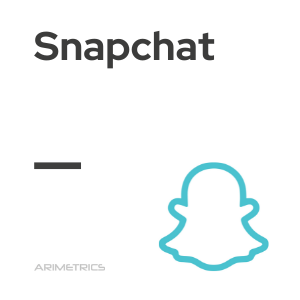
Definition:
Snapchat is a mobile app that allows users to send and receive ephemeral photos and videos, which disappear shortly after they’ve been posted. Photos and videos taken with the app are called snaps. The application allows the sender to draw or insert text into what is sent and determine for how many seconds (from 1 to 10) the recipient can view the file before it disappears from the recipient’s device. Messages can only be viewed once and during the viewing period, the recipient must maintain contact with the device’s touch screen or the file disappears.
Snapchat Stories are collections of snaps that appear in chronological order. They consist of a combination of photos, videos, graphics and illustrations, such as stickers. Each compilation contains snapshots that a user has posted to their history during the last 24 hours. Each snap appears for 24 hours and the user’s friends can view them an unlimited number of times before they expire.
What Snapchat is for
Snapchat offers a variety of uses, including:
- Show snippets of daily life: Users share images and stories that narrate their daily activities.
- Share candid photos: Stories allow users to show moments in their lives that they wouldn’t normally share, such as household accidents or comical situations.
- Sexting: Although it was not created for this purpose, some users use Snapchat to send intimate photos, trusting that these will be automatically deleted after a few seconds.
- Chat: Like other messaging applications, Snapchat offers real-time chat at no additional cost.
- Video calls: This recently added feature allows live video calls over an internet connection, similar to WhatsApp.
Origin and history of Snapchat
Snapchat was conceived by Evan Spiegel, Bobby Murphy and Reggie Brown in 2011, while studying at Stanford University. The idea came from a conversation about the need to share images that didn’t stay online permanently, which led to the creation of an app that would allow users to send ephemeral photos. Initially called Picaboo, the app was rebranded as Snapchat shortly after its launch. The unique value proposition of offering content that disappears quickly appealed to a young audience interested in a more spontaneous and less permanent form of digital communication. This innovative approach quickly captured the attention of users and competitors alike.
Evolution of Snapchat:
- 2012: Introduction of video functionality, allowing users to send short videos along with photos.
- 2013: Facebook attempts to buy Snapchat for $3 billion, but the offer is rejected. Snapchat Stories” are introduced, allowing users to create compilations of snaps visible for 24 hours.
- 2014: “Discover” is launched, a feature that allows users to access content from brands and media outlets. The first ad is also published on the platform.
- 2015: Introduction of “Geofilters”, which allow users to add location-specific graphics to their snaps.
- 2016: Snapchat launches “Memories”, a feature that allows saving snaps and stories for later viewing. The company rebrands as Snap Inc. and launches its first hardware, the “Spectacles”, sunglasses with integrated camera.
- 2017: Snap Inc. goes public on March 2. “Snap Map” is introduced, a feature that allows users to share their location on an interactive map.
- 2018: Redesign of the app to separate friend content from brand and media content, though the update receives mixed reviews from users.
- 2019: Introduction of “Snap Games”, a real-time multiplayer gaming platform.
- 2020: “Spotlight” is launched, a feature that allows users to share short videos in a feed format similar to TikTok.
- 2023: Snapchat reaches an average of 397 million daily active users in the second quarter, cementing its position as one of the top social networking platforms among young people.
Snapchat innovations and highlights
Snapchat has stood out for its ability to continuously innovate, introducing unique features that have been adopted by other platforms. Among the most notable are:
- Augmented Reality (AR) filters: Snapchat pioneered the use of AR filters, allowing users to transform their faces with visual effects in real time.
- Snapchat Lenses: These lenses allow users to interact with their environment in creative ways, adding virtual elements to the real world.
- Bitmoji: Integration of personalized avatars that users can use in their snaps and chats, providing a fun way of personal expression.
- Curated content in Discover: Snapchat collaborates with publishers and creators to offer curated content in the Discover section, keeping users informed and entertained.
